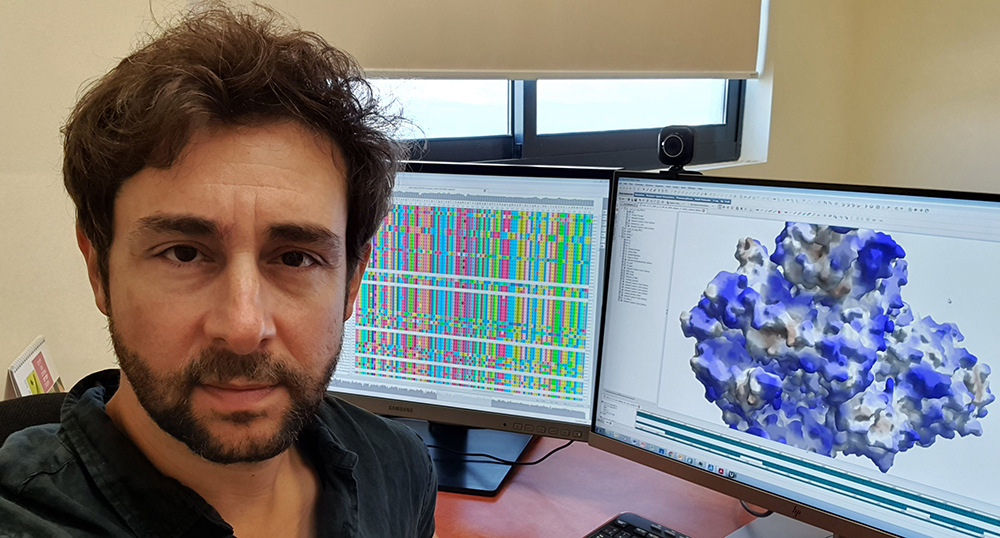
The MIGAL Galilee Research Institute, which is developing a vaccine for the novel coronavirus via its subsidiary MigVax, uses the Oracle Cloud Infrastructure to support its research efforts as part of the global mobilization to combat COVID-19. As part of the development process, the researchers have been analyzing huge databases of viral genetic sequences in order to identify the virus’s weaknesses.
At MIGAL, we put forward an approach different from other players and stakeholders in the race. We are working on a subunit vaccine based on viral proteins to be delivered orally, not via injection. This approach will ensure easier and quicker accessibility to the general public, as well as reduced costs. The proteins developed by MIGAL come from novel coronavirus. They signal to the immune system that it has been exposed to a foreign body, thus encouraging the development of antibodies to fight the virus. “The virus penetrates our bodies via the mucous membranes by means of oral and nasal airways. Hence, our vaccine works the same way, i.e. via our airways, not our blood. In this way, the immune system’s response better mimics the infection process,” states Itai Bloch, head of the research team at the MIGAL Institute.
Oracle Cloud Infrastructure in Service of the Vaccine
MIGAL’s technology is based on complex computational analysis, which requires the analysis of large data sets. Thus, for the first time, MIGAL is using cloud technology as part of its efforts to develop a COVID-19 vaccine. The company uses the Oracle Cloud Infrastructure to analyze all databases that include sequences of the viral genome and proteins. This is done in order to identify fixed and changing patterns during the evolutionary processes of the novel coronavirus, as well as to pinpoint the virus’s vulnerabilities for targeted attacks. Unlike research undertaken on viruses up to date, the novel coronavirus has enormous amounts of data collected from all corners of the globe.
“We’re collecting viral sequences from databases worldwide and are subsequently able to upload the data to the cloud in order to map changes in the sequence-level patterns. Additionally, we are assisted by three-dimensional visualizations of the viral proteins. This simulates how the virus appears in the human body. This is done in order to understand from a visual, geometric perspective where the virus’s vulnerabilities are located,” explains Itai Bloch. “If we target the immune system using the protein that we developed for virus’s vulnerabilities, it will block the virus and disrupt its ability to penetrate human cells.
“Analyzing the sequences and the three-dimensional structural visualizations requires immense and powerful computational abilities. The rest of our tasks also consume a large amount of resources. The cloud provides us with the potential to expand the experiments exponentially. Bloch adds that researchers also utilize the transfer learning technique, a sub-field of machine learning in order to characterize and identify behavioral patterns of the novel coronavirus.
Oracle is donating to MIGAL the power of its cloud computing as part of Oracle for Research, the company’s research arm, which presently supports research projects across the globe, many of which are combatting COVID-19.
Other insights that MIGAL intends to glean from the data include:
What will the next-generation coronavirus look like?/ Will the mutation reduce the vaccine’s effectiveness? “Everyone is working on the sequence that emerged in Wuhan, China. Yet, as infection spreads across the world, the possibility that the virus will change only increases,” explains Bloch. Since there are tens of thousands of coronavirus strains, the challenge is to locate groups of strains that have identical vulnerability points (genetic classification). If this degree of constancy is found, it will be possible to better understand the “next generation” coronavirus, a mutation that could reduce the vaccine’s effectiveness.
Universal vaccine - Is it even possible to design one solution that can be implemented as an all-encompassing defense against all groups of strains?
Predictability - In which direction and at what pace will the evolutionary process of the virus take so that is will be possible to prepare for possible changes?
Asaf Sobol (pictured) Business Development Manager at Oracle Israel: “Oracle is proud to contribute its cloud technology for the benefit of the vaccine development operations at Israel’s MIGAL Institute. This is part of our global activities to support clinical trials examining the safety and efficacy of various COVID-19 pharmaceuticals and vaccines worldwide. These trials cover numerous countries and hundreds of research institutions.”
The MIGAL Galilee Research Institute is among the pioneers in the global race to develop a vaccine against the virus. Several years ago, the institute successfully developed a vaccine against a coronavirus strain found in birds. In February 2020, the institute announced that it was working to leverage this discovery in order to develop a vaccine against COVID-19.
